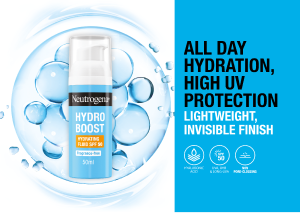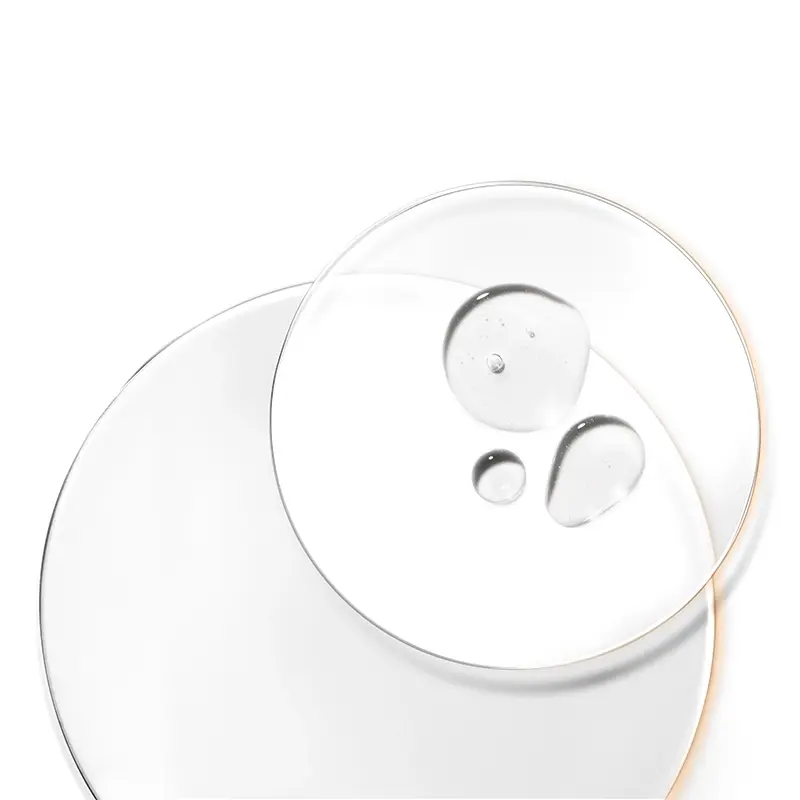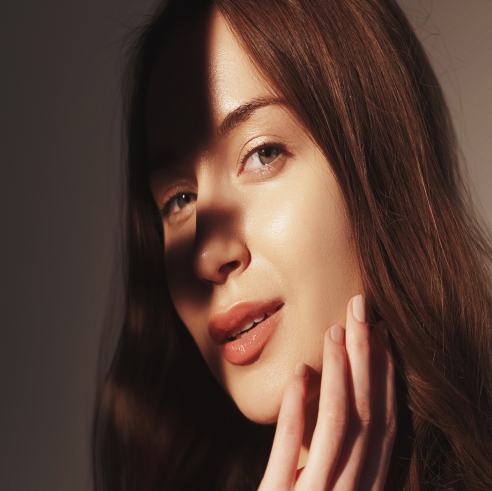Wearing sunscreen can protect you from harmful sun rays, helping to prevent sun damage happening to your skin. Remember, you can get sun damaged even on a cloudy day, not just when the sun is shining, so it’s important to protect yourself.
Sun damage not only increases your risk of premature ageing, but it also raises your risk of skin cancer. That’s why sunscreens are designed with specific combinations and percentages of active ingredients that give the products their SPF (Sun Protection Factor). These ingredients work by either reflecting or absorbing the sun’s ultraviolet (UV) radiation, preventing it from penetrating deeper layers of the skin.
Sunscreen products that protect from both UVA and UVB are known as broad spectrum, with star ratings and SPF numbers that can help you determine the level of protection they offer against each.
With this in mind, let’s look at how sunscreens work, learn about SPF and UVA star ratings, and how you can choose and use a sunscreen that’s suitable for your skin.
In this guide:
What is UVA and UVB?
Sunlight has different types of light rays as part of the natural energy the sun produces. Two of these light rays, ultraviolet A (UVA) and ultraviolet B (UVB), can cause damage to your skin.
Both UVA and UVB rays have a shorter wavelength than visible light, so you won’t be able to see them. But they can still have an impact on your skin.
UVA – 95% of the radiation that reaches the Earth comprises UVA rays. They have a low radiation energy but longer wavelengths than UVB rays. As such, they can penetrate the middle layers of your skin, called the dermis. This can cause skin ageing, sunburn, or even certain skin cancers.
UVB – These have a shorter wavelength and greater energy than UVA rays. So, they can only penetrate the upper layer of the skin, called the epidermis. Overexposure to UVB rays can cause sunburn and, in more severe cases, blistering. They’re also linked to malignant melanoma, a dangerous type of skin cancer.
That said, exposure to some mild amounts of UVA and UVB rays do have some health benefits. They can help the skin to make vitamin D3, which is essential for bone and muscle health.
What is SPF and star ratings?
SPF measures how much protection against ultraviolet B radiation a sunscreen provides. SPFs are scaled on the level of protection from 2 to 50+, with 50+ being the strongest form of UVB protection.
The star rating indicates how much protection against ultraviolet A radiation a sunscreen provides. UK sunscreen products have a star rating of up to 5 stars, with a higher star rating providing more protection.
Additionally, if you see the letters ‘UVA’ inside a circle on your sunscreen packaging, this is an indication that the product meets EU recommendations, with the UVA protection being a third or more of the SPF value.
Sunscreens that provide both UVB and UVA protection are sometimes referred to as broad-spectrum sunscreens.
What does the SPF number mean?
The SPF number indicates how long UV radiation from the sun would take to burn your skin if you were using sunscreen as advised, versus the time without any sunscreen. So, if you’re using sunscreen with SPF 30, it means that it would take 30 times longer for your skin to burn, compared to if you hadn’t applied any sunscreen.
Remember that no sunscreen product is 100% effective at preventing sun damage. Higher SPFs may deliver more protection, but that doesn't mean they last any longer than lower SPF products. So, it's important to make sure you reapply them just as often.
How do sunscreens work?
Sunscreens have active ingredients that help protect your skin from the harmful effects of the sun. These ingredients can work by either reflecting or absorbing the sun’s ultraviolet (UV) radiation. These are:
Physical (mineral) sunscreen ingredients – They work by blocking or scattering the rays before they can penetrate the skin. Ingredients include zinc oxide and titanium dioxide.
Chemical ingredients – They work by absorbing the UV rays before they can damage your skin. Ingredients include octisalate and avobenzone.
Both types have been tested as safe and effective, and some sunscreen products even combine both ingredient types to enhance protection.
What sunscreen should I use?
You should ideally get yourself a broad-spectrum sunscreen, which protects your skin from both UVB and UVA rays.
It’s also recommended to use a sunscreen with an SPF of at least 30 to protect yourself from getting sunburnt.
If you’re indoors most of the day, with only short intervals in the sun, you could go for a sunscreen with an SPF of 15 or higher. But if you spend a lot of time outdoors, especially when the sun is strongest, you’ll need an SPF of 30 or higher.
When it comes to star ratings for UVA protection, the higher the rating, the better.
If you’re taking part in outdoor exercise or going for a swim, you’ll want a sunscreen that’s water-resistant too.
Sunscreens that are labelled water-resistant have been tested to provide protection for up to 40 minutes of swimming, while ‘very water-resistant’ sunscreens can stay effective for up to 80 minutes in the water. It’s important to remember to reapply your sunscreen after getting out of the water too to make sure you’re fully protected.
How to apply sunscreen products to your skin
Many people do not use as much sunscreen as they should. Ideally, you want to apply around 6 to 8 teaspoons of sunscreen as an adult if you’re applying on your entire body.
Applying sunscreen too thinly can reduce its protective properties against the sun. If you’re worried that you’re not applying enough SPF 30, you might want to go for a product with a higher SPF.
If you plan to be outdoors for a long time, you might need to apply sunscreen twice – half an hour before going outdoors, and then again just before leaving the house.
Even when it’s cloudy, up to 80 percent of the sun’s UV radiation reaches the Earth. So, you should apply an SPF every day to help protect your skin from any potential damage.
Sunscreen should be applied to all exposed areas of the skin, including the face, neck, ears, and top of head if you have a clean shave or thinning hair. It should be reapplied every two hours, and again after swimming, sweating, or towelling.
In addition to applying sunscreen properly, it’s important to take other steps for sun safety. This includes covering up with suitable clothing, wearing sunglasses, and spending time in the shade – especially when the sun is at its strongest, which is typically between 11am and 3pm.
Applying sunscreen to the face, head, and neck
The head and neck make up around 4% of your surface area, so you should aim to apply about 1/4 or 1/3 of a teaspoon of sunscreen on the face. You can add another 1/3 of a teaspoon for extra protection if you’re going to a very sunny area, or if you’re generally prone to sunburn.
For maximum protection when applying sunscreen, you should apply your products in the following order:
Your skincare products
Your sunscreen
Any makeup
Don’t forget to apply sunscreen on your temples, the areas behind your ears, and hairline, as these can easily become susceptible to sunspots.
You might also notice that some makeup products – such as moisturisers, eyeshadow, and concealers – include built-in SPF. While these are a nice addition to your suncare routine, these products typically aren’t broad spectrum and only protect against UVB rays. Additionally, the SPF isn’t usually enough to limit the harmful effects of UV radiation.
Therefore, you shouldn’t rely on these products alone and should apply sunscreen liberally and frequently to all exposed skin, reapplying every two hours if you’re outdoors in the sun.
Sunscreen FAQs
What does SPF mean?
SPF stands for Sun Protection Factor. It measures the amount of protection that your skin gets from ultraviolet B (UVB) radiation.
What is the difference between SPF 30 and 50?
Sunscreens with an SPF rating of 50+ offer the strongest protection against UVB rays. When applied correctly, a sunscreen with an SPF of 30 filters about 97% of UVB rays, whereas an SPF 50 can filter about 98% of UVB rays. This difference can be significant for people with very fair or sun-sensitive skin.
How long does protection last after applying sunscreen?
The protection offered by sunscreen usually lasts a couple of hours or so. It’s advisable to reapply every two hours when outdoors to avoid getting sunburn. You may need to reapply more often if you’re spending time in the water.
Why should you wear SPF every day?
Even on a cloudy day, about 80 percent of the sun’s UV radiation makes it to Earth. Applying an SPF every day can help protect your skin from any sun damage.




